1. Giant Salmon Carp
A huge Giant salmon carp fish in the Mekong River thought to be extinct has been spotted three times in recent years.
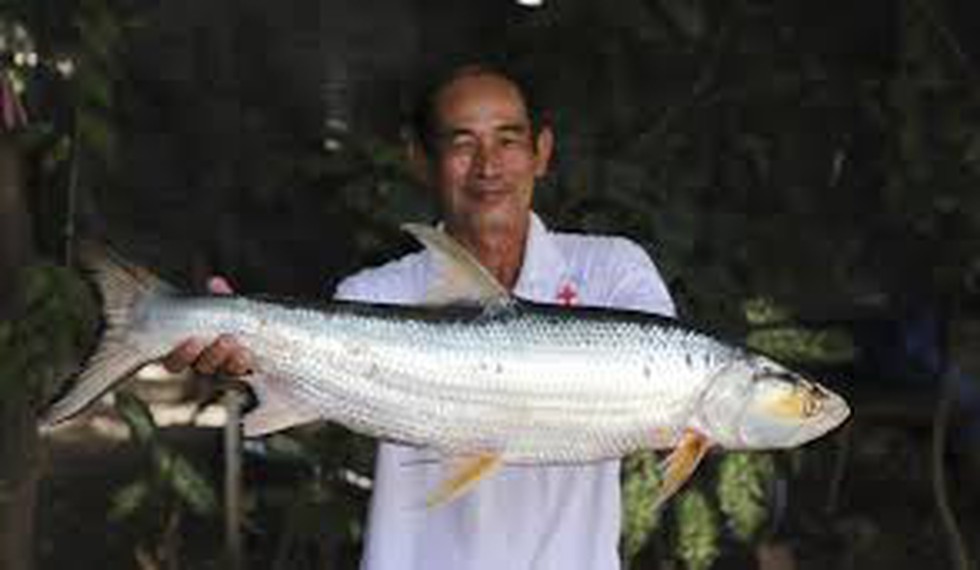
About Giant Salmon Carp:
- It is also known as the Mekong giant salmon carp, is a species of freshwater fish in the family Cyprinidae and the single species in the monotypic genus Aaptosyax.
- Appearance: The predatory fish can grow up to 4 feet in length, and has a conspicuous knob at the tip of its lower jaw. A striking patch of yellow surrounds its large eyes.
- It is endemic to the middle reaches of the Mekong River in northern Cambodia, Laos and Thailand.
- Its population is much reduced (>90%) as a result of overfishing and habitat degradation.
- Conservation status
- IUCN: Critically Endangered
Key facts about the Mekong River
- It is the longest river in Southeast Asia, the 7th longest in Asia, and the 12th longest in the world.
- It rises in southeastern Qinghai province, China.
- It originates from the Sanjianyuang in the Tibetan Plateau, with the area designated a national nature reserve to protect the headwaters of the Yangtze, Yellow, and Mekong Rivers.
- It is the river with the most large fish species, including giant freshwater stingrays, giant pangasius, Mekong giant catfish, and giant barb.
- It creates a huge delta, or triangular piece of land, in southern Vietnam. The delta has rich soil and is one of the world’s great producers of rice.
2. PM-YASASVI Scheme
The Ministry of Social Justice and Empowerment has implemented the PM Young Achievers Scholarship Award Scheme for Vibrant India (PM-YASASVI).
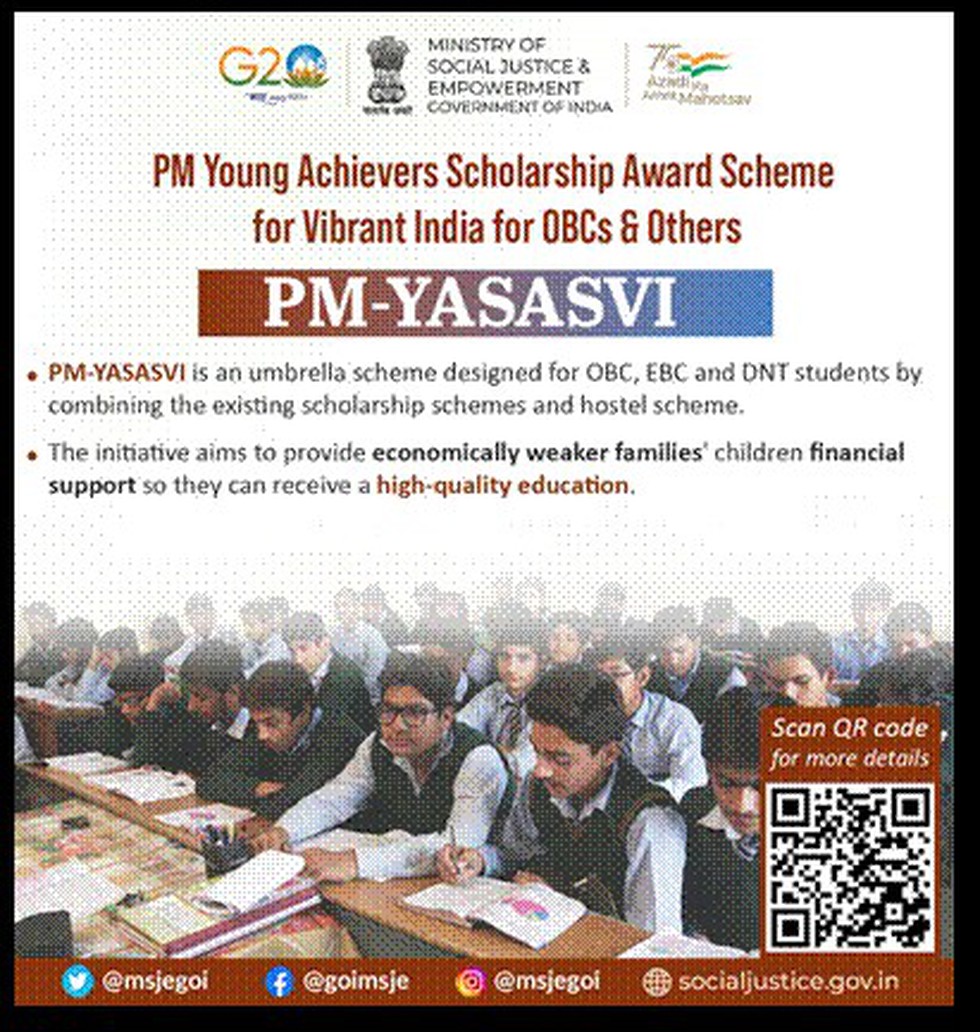
About PM-YASASVI Scheme:
- It is a comprehensive umbrella scheme aimed at uplifting students from Other Backward Classes (OBC), Economically Backward Classes (EBC), and Denotified Tribes (DNT) by providing them with access to quality education during their formative years.
- It has consolidated and enhanced several earlier initiatives, including the Dr. Ambedkar Post-Matric Scholarship Scheme for EBCs and the Ambedkar Pre-Matric and Post-Matric Scholarship Scheme for DNTs, which were subsumed under this program starting from 2021-22.
- By integrating these schemes, PM YASASVI aims to ensure a more streamlined and impactful approach to supporting the educational needs of socially and economically disadvantaged students.
- Objective: The overarching goal of the scheme is to promote educational empowerment among these vulnerable groups, helping them overcome financial barriers and complete their education.
- Under this Scheme students can avail Pre-Matric Scholarship from Class 9 to 10 and Post Matric Scholarship for their higher studies at post-matriculation or post-secondary stage.
- Eligibility:
- The Pre-Matric Scholarship is designed for students in classes IX and X attending government schools,
- Family income below Rs. 2.5 lakh.
- Implementing Agency:Department of Social Justice and Empowerment, Ministry of Social Justice and Empowerment.
3. Lake Erie
Research has shown that toxins from these bacteria called microcystin can make animals and people sick when they come into contact with infected water of Lake Erie.

About Lake Erie:
- It is the fourth largest of the five Great Lakes of North America.
- It forms the boundary between Canada(Ontario) to the north and the United States to the west, south, and east.
- The lake’s principal tributary rivers are the Detroit (carrying the discharge of Lake Huron), Huron, and Raisin rivers of Michigan etc.
- The lake discharges at its eastern end through the Niagara River.
- It is an important link in the Lawrence Seaway.
What is Microcystin?
- It is a single-celled freshwater cyanobacterium that forms colonies surrounded by mucilage.
- The genus Microcystis contains several species which often form massive blooms and which produce toxins.
- Microcystin is a potent liver toxin and possible human carcinogen.
- It inhibits the activities of protein phosphatase-1 and protein phosphatase-2A, which leads to disruption of the cytoskeleton network and subsequent cell death.
4. What is E. coli?
According to a report from the Centers for Disease Control and Prevention (CDC), a person died and 49 others fell ill following an E. coli outbreak linked to McDonald's Quarter Pounder Hamburgers.

About E. coli:
- Escherichia coli, commonly known as E. coli, is a type of bacteria that can be found in the intestines of humans and animals.
- coli is a rod-shaped bacterium of the Enterobacteriaceae family.
- While most strains of E. coli are harmless and even beneficial, some strains can cause illness and infections.
- Some kinds of E. coli can cause diarrhea, while others cause urinary tract infections, respiratory illness and pneumonia, and other illnesses.
- Transmission:It can be transmitted to humans through contaminated food, water, or contact with fecal matter from infected individuals or animals.
- How does E. coli make you sick?
- The most familiar strains of E. coli that make you sick do so by producing a toxin called Shiga.
- This toxin damages the lining of your small intestine and causes diarrhea.
- These strains of E. coli are also called Shiga toxin-producing E. coli (STEC).
- Symptoms:
- The most common symptoms of E.coli infection include fever of more than 102 degree F, persistent diarrhoea, bloody diarrhoea, and vomiting.
- The main problem, however, is dehydration due to the inability of the patient to retain water and fluids.
- In very few cases, people may get acute kidney injury.
- Treatment: Most E. coli infections are self-limiting and resolve on their own without treatment. However, it's essential to stay hydrated during the course of the illness.
5. LISA Mission
Recently, the National Aeronautics and Space Administration (NASA) revealed the first look of the prototype for six telescopes that will help LISA's three spacecraft detect gravitational waves in space.
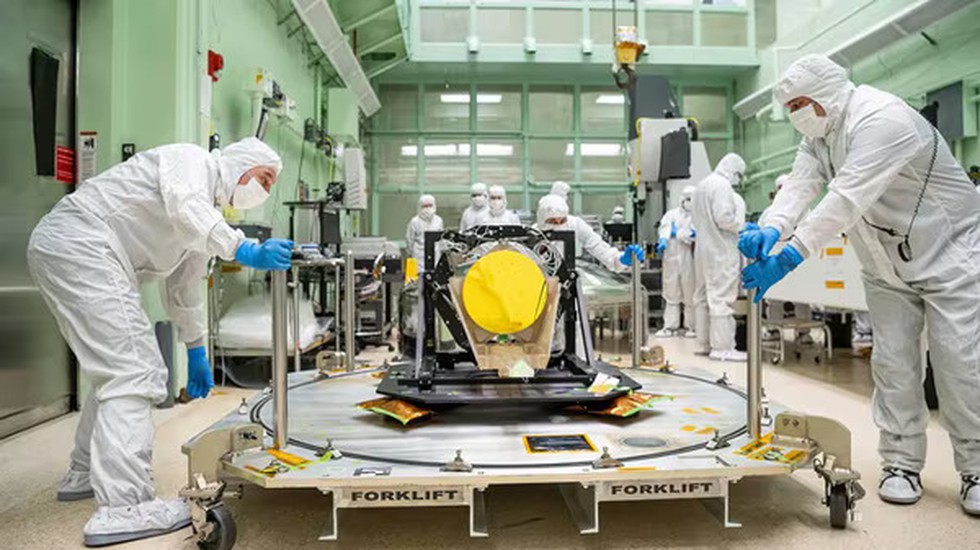
About LISA Mission:
- The Laser Interferometer Space Antenna (LISA) mission is a collaborative effort between NASA and the European Space Agency (ESA) set to launch in the mid-2030s.
- The main objective of the mission is to detect and study gravitational waves by putting three spacecraft into the Earth’s orbit and positioning them in a triangular format with 1.6 million miles on each side.
- It will be the "first gravitational wave detector in space" and will "explore the fundamental nature of gravity and black holes". It will also probe the rate of expansion of the Universe.
- All three spacecraft will have two telescopes each. The LISA mission will use lasers to detect gravitational waves.
- The LISA mission will comprise three spacecraft. These three spacecraft will fly in a triangular formation behind the Earth as our planet orbits the Sun.
- The spacecraft will sit in a heliocentric orbit, about 50 million km from Earth, with a distance of around 2.5 million km between each spacecraft.
- LISA will detect ripples in spacetime through subtle changes in the distances between free-floating cubes nestled within each spacecraft.
- Changes in the relative distances between these golden cubes will be tracked with extreme accuracy using laser interferometry.
6. UDAN (Ude Desh ka Aam Nagrik) Scheme
The Indian Government recently announced an extension of the regional air connectivity scheme UDAN (Ude Desh ka Aam Nagrik) for another 10 years.

About UDAN Scheme:
- It is a regional airport development and "Regional Connectivity Scheme" (RCS) of the Union Government of India.
- It was initially launched on October 21, 2016, for a 10-year period.
- The primary objective of the scheme is to provide affordable and efficient air travel options to residents of tier-2 and tier-3 cities, remote areas, and regions with limited or no air connectivity.
- The scheme envisages providing connectivity to unserved and underserved airports of the country through the revival of existing airstrips and airports.
- Nodal Ministry: Ministry of Civil Aviation
- Under the UDAN Scheme, the government works in partnership with airlines to provide subsidies and incentives to operate flights on underserved and unserved routes.
- The government provides financial support to airlines through a Viability Gap Funding (VGF) model, which covers the difference between the cost of operations and the expected revenue on the identified routes.
- Aviation companies bid for air routes. The company that asks for the lowest subsidy is awarded the contract. Under this fare for each flight, the airline has to book half, or a minimum of 9, or a maximum of 40 seats.
- Under the scheme, the airfare for a one-hour journey by a 'fixed wing aircraft' or half an hour's journey by a helicopter for about 500 km has been fixed at Rs.2500/-.
Source : India: Affordable flights for another decade, as Govt. extends UDAN scheme for 10 more years
7. Cauvery Wildlife Sanctuary
The Karnataka Forest Department has been urged to reject the proposal for the Barachukki mini-hydel project, which necessitates diversion of forest land in the Eco-Sensitive Zone (ESZ) of the Cauvery Wildlife Sanctuary.
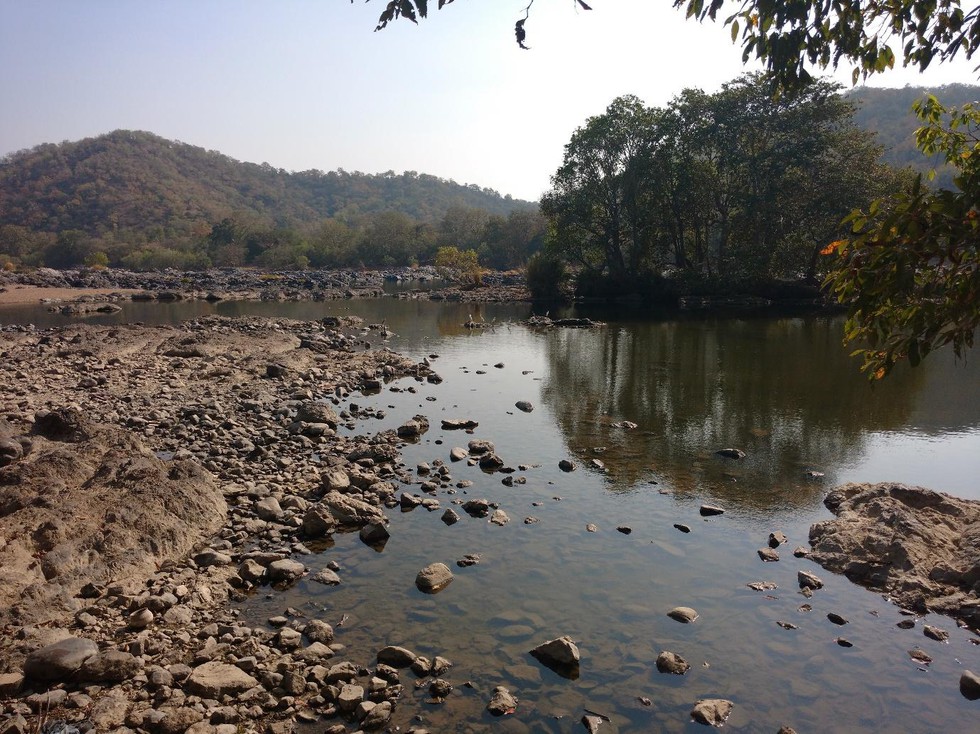
About Cauvery Wildlife Sanctuary:
- It is a protected area located in the Mandya, Chamarajanagar, and Ramanagar districts of Karnataka.
- It was established in 1987.
- The Cauvery River passes through its midst.
- The sanctuary spans an area of 1027.535 sq.km.
- To the east and northeast, the Sanctuary is bordered by Tamil Nadu State.
- Vegetation: The major portion of the forests are of South Indian dry deciduous type.
- Flora: The dense forests are dominated by teak and sandalwood trees.
- Fauna:
- It is home to mammals like elephant, wild boar, leopard, dhole, spotted deer, barking deer, four-horned antelope, chevrotain, common langur, Grizzled giant squirrel, etc.
- The river Cauvery also houses various species of reptiles like the Mugger crocodile, Indian mud turtles, and various species of snakes.
- This is also one of the few places to find mahseer fish.
8. Pong Dam
Even after five decades have passed since thousands of families were uprooted to make way for the construction of Pong Dam, the cases of 6,736 families who await rehabilitation are still pending.

About Pong Dam:
- The Pong Dam, also known as the Beas Dam, is an earth-fill embankment dam constructed on the river Beas in the wetland of Shivalik hills in the Kangra district of Himachal Pradesh.
- The purpose of the dam is water storage for irrigation and hydroelectric power generation.
- The construction of the dam began in the year 1961 and was completed in 1974, and at that time it was known as the tallest of its type in the country.
- The raised water level thus invariably created an artificial lake called the Maharana Pratap Sagar,after the great ruler of Mewar.
- It was declared a bird sanctuary in 1983 due to its waterfowl diversity. It received the designation of Ramsar Wetland in 2002.
- It is home to several species of avifauna, some of which include Bar Headed Geese, Red-necked Grebe, northern lapwing, common teal, spot-billed duck, Eurasian coot, black stork, egrests, etc.
- It is the most important fish reservoir in the foothills of the Himalayas in Himachal Pradesh.
- Features of Dam:
- The Pong Dam is a 133 m tall and 1,951 m long earth-fill embankment dam with a gravel shell.
- It is 13.72 m wide at its crest, which sits at an elevation of about 435.86 m above sea level.
- The base of the Pong Dam is about 610 m wide and has a total volume of 35,500,000 metre cube.
9. What is Bioacoustics?
Bioacoustics combined with Artificial Intelligence (AI) can revolutionize biodiversity monitoring both on land and in aquatic settings, according to researchers.
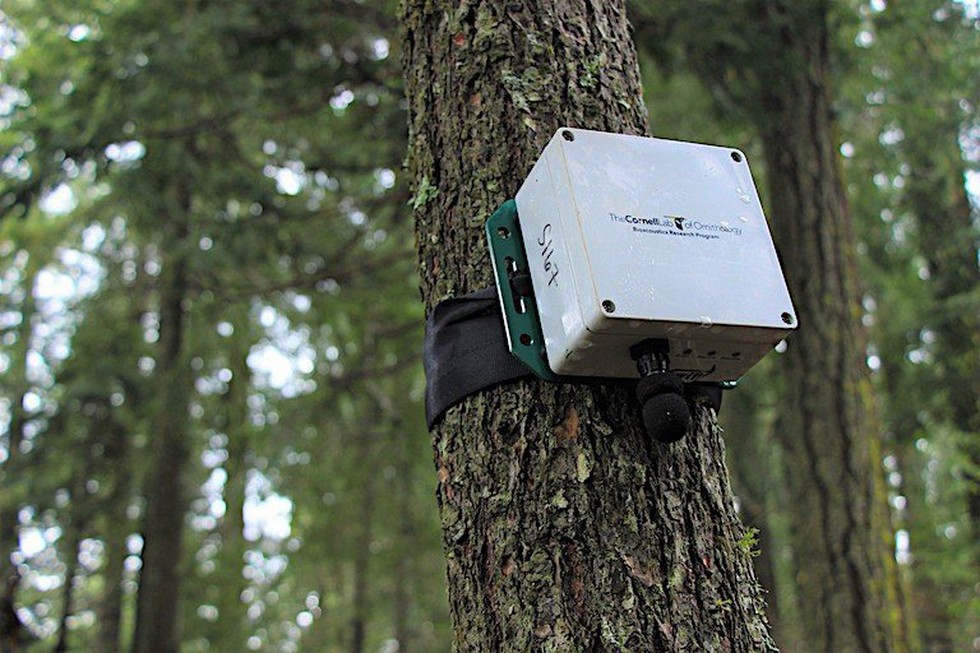
About Bioacoustics:
- It is a cross-disciplinary science that combines biology and acoustics.
- Usually, it refers to the investigation of sound production, dispersion, and reception in animals.
- Bioacoustics research can include approaches whereby scientists focus on specific species and conduct fieldwork to record their vocalisations at close range.
- Alternatively, it may involve the placement of passive acoustic monitors in a set location to record audio data over a longer period of time.
- In terms of conservation research, bioacoustics:
- Allows us to quickly gather in-depth information about ecosystems, including species’ presence (determined by their vocalisations), rain patterns, and human activity.
- Helps us monitor threatened species, examine habitat use and migration patterns, and understand how ecosystems recover from disturbance events like logging or forest fires.
- Provides data to guide conservation planning and support the development of new conservation strategies.
Source : How bioacoustics and AI can help study animal populations in the forest and beneath the waves
10. World Economic Outlook (WEO)
Global growth is expected to remain stable, yet underwhelming, at 3.2% in 2024 and 2025, according to the IMF's recent dispatch of its World Economic Outlook (WEO).

About World Economic Outlook (WEO):
- It is a comprehensive report published twice a year by the International Monetary Fund (IMF).
- The WEO is usually published in April and October, followed by the less comprehensive WEO updates in July and January.
- It includes the IMF's estimates and forecasts for global output growth and inflation as well as for real gross domestic product (GDP) growth, consumer prices, current account balances, and unemployment in the IMF’s 190 member countries, grouped by region and development status.
- The WEO also includes several chapters on selected pressing economic issues.
- The data is drawn from IMF representatives' consultations with member countries, and is included in the WEO database.
- Highlights of the recent report:
- Global growth is expected to remain stable, yet underwhelming, at 2% in 2024 and 2025.
- For India, the IMF has maintained its GDP growth estimate at 7% for 2024, followed by 5% next year, but linked the moderation in growth from last year to the exhaustion of “pent-up demand accumulated during the pandemic.
- The world's largest economy, the United States, is poised to grow at 2.8% in 2024 and 2.2% in 2025. Meanwhile, the IMF expects China's economy to grow at 4.8% in 2024 and 4.5% in 2025.
- The IMF's overall forecast for emerging markets and developing economies remained stable for the next two years in its latest outlook, hovering around 4.2% and steadying at 3.9% by 2029.


























































































































































.png)
.png)
.png)
.png)
.png)


.png)
.png)
.png)





.png)
.png)






.png)
.png)
.png)
.png)
.png)
.png)
.png)
.png)
.png)

.png)







.png)
.png)


.png)
.png)
.png)


.png)

.png)
.png)





.jpg)

.png)
.png)


.png)

.png)
.png)
.png)

.jpg)

.jpg)


.png)

.png)
.png)
.png)
.png)
.png)
.png)
.png)
.png)
.png)
.png)




.png)

.png)





.png)
.png)
.png)
.png)
.png)
.png)
.png)
.png)
.png)
.png)
.jpg)
.jpg)

.png)
.png)
.png)
.png)
.png)
.png)
.png)
.png)
.png)
.png)
.png)
.png)
.png)
.png)
.png)
.png)
.png)
.png)
.png)
.png)
.png)
.png)



.png)
.png)

.jpg)
.jpg)


.jpg)
.jpg)
.jpg)
.jpg)
.jpg)

.jpg)








.jpg)
.jpg)
.jpg)
.jpg)
.jpg)

















.jpg)
.jpg)







.jpg)


















.jpg)
.jpg)






























































































.jpg)
.jpg)


























.jpg)

.jpg)










.jpg)








.jpg)




.jpg)










.jpg)


















.jpg)












































.jpg)














.jpg)
.jpg)
.jpg)





.jpg)

.jpg)
.jpg)





































































.jpg)


































.jpg)
.jpg)
















































.jpg)












.jpg)


.jpg)




.jpg)
.jpg)
.jpg)

.jpg)
.jpg)
.jpg)
.jpg)

.jpg)
.jpg)
.jpg)

.jpg)
.jpg)
.jpg)
.jpg)
.jpg)
.jpg)
.jpg)
.jpg)

.jpg)


.jpg)
.jpg)
.jpg)
.jpg)
.jpg)
.jpg)
.jpg)
.jpg)
.jpg)
.jpg)











.jpg)
.jpg)





.jpg)
.jpg)
.jpg)
























.jpg)
























.jpg)









.jpg)
.jpg)







.jpg)
.jpg)









































.jpg)
.jpg)
.jpg)
.jpg)
.jpg)

.jpg)
.jpg)
.jpg)
.jpg)
.jpg)


.jpg)
.jpg)
.jpg)
.jpg)
.jpg)

.jpg)
.jpg)
.jpg)
.jpg)
.jpg)
.jpg)
.jpg)
.jpg)
.jpg)
.jpg)
.png)

.png)
.png)

.png)
.png)
.png)
.png)


.jpg)
.jpg)

.jpg)
.jpg)
.jpg)

.png)
.png)
.png)
.png)
.png)
.png)
.png)

.png)
.png)
.png)
.png)
.png)
.png)
.png)
.png)
.png)
.png)





































































-min.png)



.png)




.png)








































